First detection of gamma-ray burst afterglow in very-high-energy gamma light
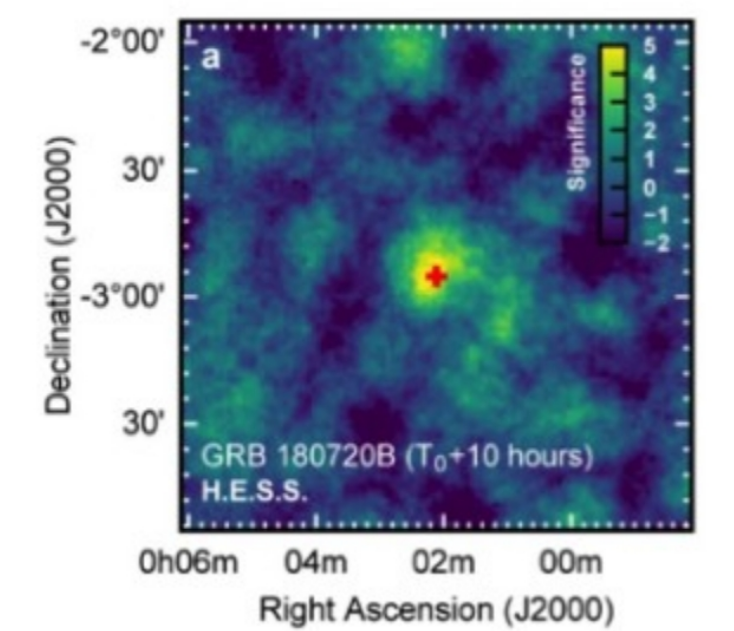 After a decade-long search, scientists have for the first time detected a gamma-ray burst in very- high-energy gamma light. This discovery was made in July 2018 by the H.E.S.S. collaboration using the huge 28-m telescope of the H.E.S.S. array in Namibia. Surprisingly, this Gamma-ray burst, an extremely energetic flash following a cosmological cataclysm, was found to emit very-high-energy gamma-rays long after the initial explosion.
After a decade-long search, scientists have for the first time detected a gamma-ray burst in very- high-energy gamma light. This discovery was made in July 2018 by the H.E.S.S. collaboration using the huge 28-m telescope of the H.E.S.S. array in Namibia. Surprisingly, this Gamma-ray burst, an extremely energetic flash following a cosmological cataclysm, was found to emit very-high-energy gamma-rays long after the initial explosion.
Interstellar Comet with a Familiar Look
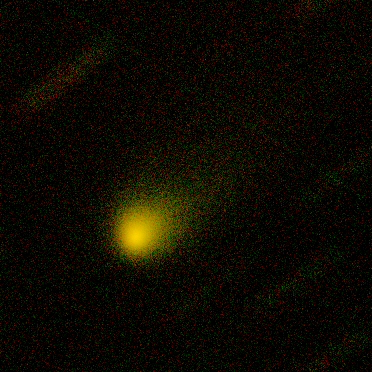 A new comet discovered by amateur astronomer Gennady Borisov is an outcast from another star system, yet its properties determined so far are surprisingly familiar – a new study led by JU researchers shows. The team’s findings are being published in Nature Astronomy on 14 October 2019.
A new comet discovered by amateur astronomer Gennady Borisov is an outcast from another star system, yet its properties determined so far are surprisingly familiar – a new study led by JU researchers shows. The team’s findings are being published in Nature Astronomy on 14 October 2019.
Estimation of Arrival Time of Coronal Mass Ejections in the vicinity of the Earth
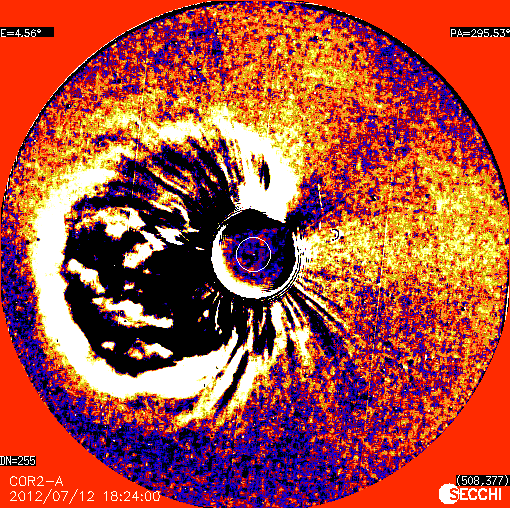 The arrival time of coronal mass ejections (CMEs) in the vicinity of the Earth is one of the most important parameters in determining space weather. An accurate model for prediction of travel time (TT) of CMEs directed towards Earth is important as they cause intense geomagnetic disturbances. Our study provides prediction model with lesser errors compared to previous methods. In addition this gives us a better understanding of the kinematics of CMEs.
The arrival time of coronal mass ejections (CMEs) in the vicinity of the Earth is one of the most important parameters in determining space weather. An accurate model for prediction of travel time (TT) of CMEs directed towards Earth is important as they cause intense geomagnetic disturbances. Our study provides prediction model with lesser errors compared to previous methods. In addition this gives us a better understanding of the kinematics of CMEs.
Needle-like structures on positively charged lightnings
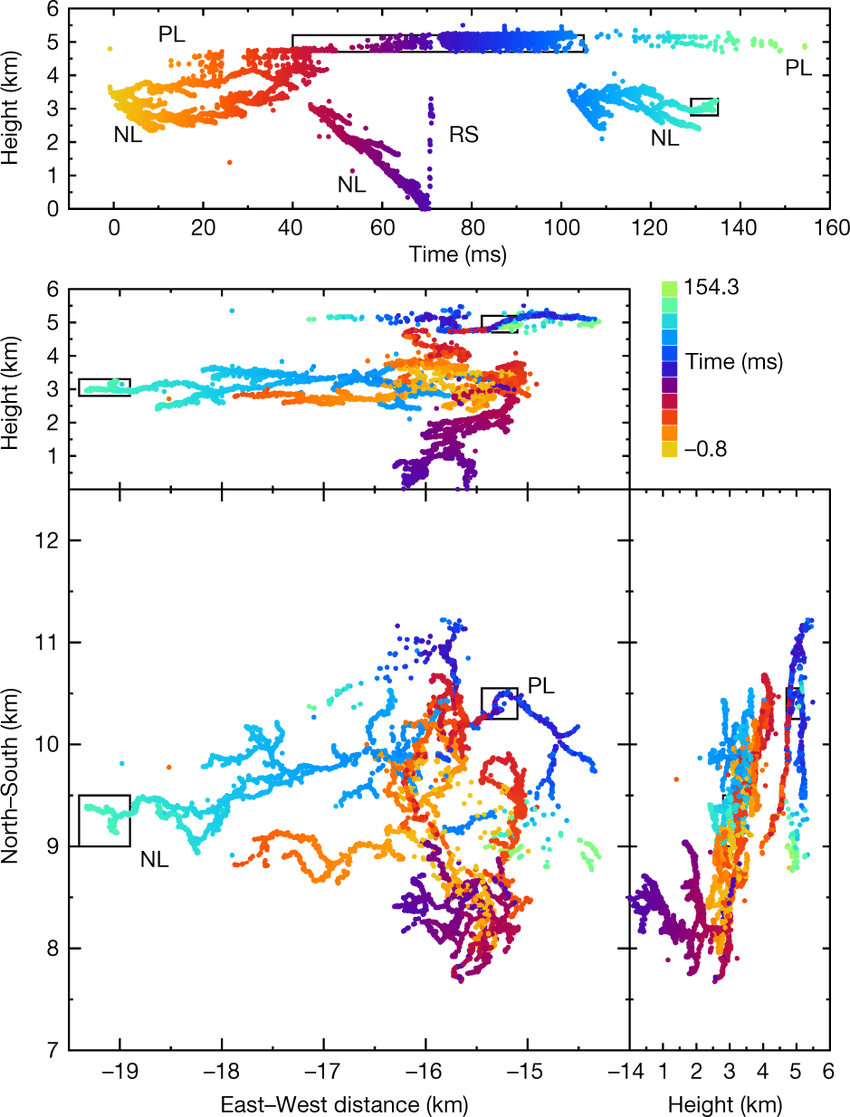 Negative leaders propagate in discrete way. In the range from 30 to 300 megahertz, numerous radio pulses are observed. These pulses can be remotely sensed even from a distance, and imaged with high spatial and temporal resolution. On the other hand, positive lightning leaders propagate more continuously and emit low-power radiation at high frequencies. Despite this, their emission has been also detected. It turned out that this emission has a pattern that is different from that of negative leaders.
Negative leaders propagate in discrete way. In the range from 30 to 300 megahertz, numerous radio pulses are observed. These pulses can be remotely sensed even from a distance, and imaged with high spatial and temporal resolution. On the other hand, positive lightning leaders propagate more continuously and emit low-power radiation at high frequencies. Despite this, their emission has been also detected. It turned out that this emission has a pattern that is different from that of negative leaders.
Rhythmic oscillations of the blazar Markarian 501
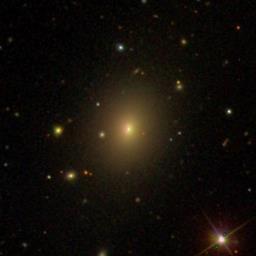 Dr. Gopal Bhatta from the Jagiellonian University in Kraków has detected transient rhythmic oscillations in the gamma-ray emission from the blazar Markarian 501. The discovery could be helpful in improving our understanding of the most energetic processes taking place in the universe.
Dr. Gopal Bhatta from the Jagiellonian University in Kraków has detected transient rhythmic oscillations in the gamma-ray emission from the blazar Markarian 501. The discovery could be helpful in improving our understanding of the most energetic processes taking place in the universe.
Signatures of UV radiation around low-mass protostars in Serpens
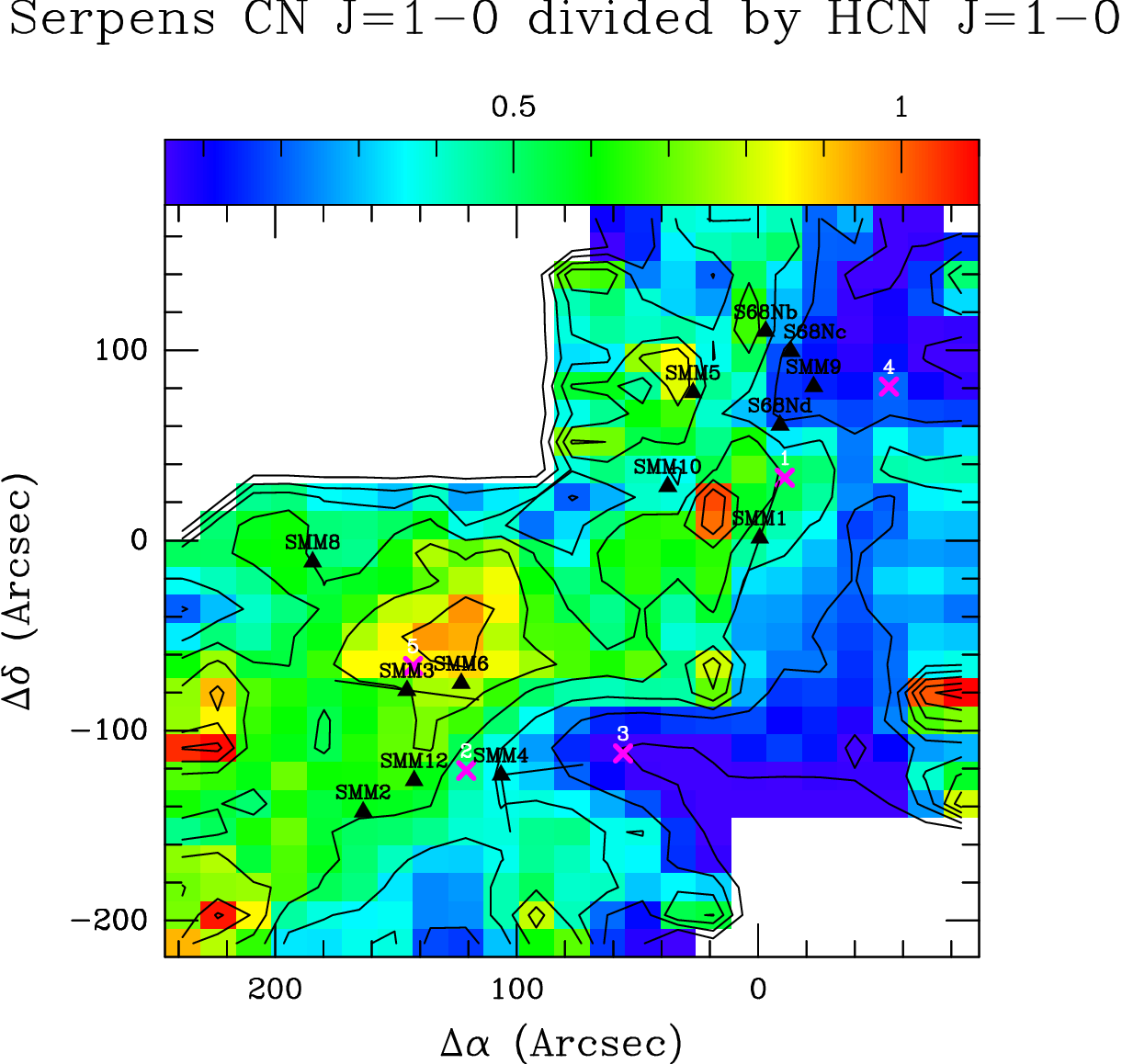 New-born protostar forms in dense core deep inside molecular cloud. Molecular cloud is characterised by high extinction in the optical range so observations at long wavelengths are necessary. In particular, submillimetre spectra include rotational lines of key molecules which are useful tracers of physics and chemistry around low-mass protostars. The column densities of HCN and CN molecules can be determined with the RADEX radiative transfer code. This information can be compared with an astrochemical model in order to characterise the strength of the UV radiation. Thus, we gain new understandings of chemical and physical processes around low-mass protostars.
New-born protostar forms in dense core deep inside molecular cloud. Molecular cloud is characterised by high extinction in the optical range so observations at long wavelengths are necessary. In particular, submillimetre spectra include rotational lines of key molecules which are useful tracers of physics and chemistry around low-mass protostars. The column densities of HCN and CN molecules can be determined with the RADEX radiative transfer code. This information can be compared with an astrochemical model in order to characterise the strength of the UV radiation. Thus, we gain new understandings of chemical and physical processes around low-mass protostars.
Dusty galaxies from the AKARI All Sky Survey
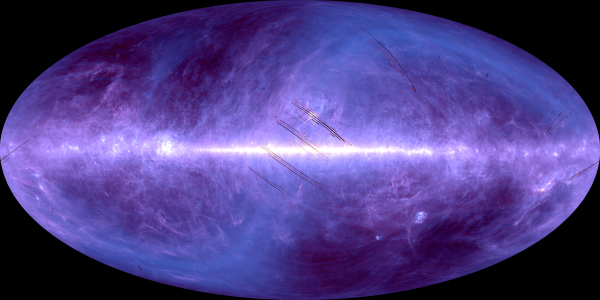 A tight far infrared-radio emission correlation for galaxies is a well known phenomenon, which appears to extend from the local Universe up to high redshifts and for a wide range of galaxy masses and types. It is attributed to recent star formation processes which produce both far infrared (related to the star-formation process in galaxies through dust particles produced in their life-cycles, which absorb the ultraviolet radiation emitted by young, massive and hot stars and re-emit it at longer wavelengths) and synchrotron radiation (massive stars explode as supernovae and the resulting cosmic rays are accelerated in the magnetic field of the galaxy, producing synchrotron emission.)
A tight far infrared-radio emission correlation for galaxies is a well known phenomenon, which appears to extend from the local Universe up to high redshifts and for a wide range of galaxy masses and types. It is attributed to recent star formation processes which produce both far infrared (related to the star-formation process in galaxies through dust particles produced in their life-cycles, which absorb the ultraviolet radiation emitted by young, massive and hot stars and re-emit it at longer wavelengths) and synchrotron radiation (massive stars explode as supernovae and the resulting cosmic rays are accelerated in the magnetic field of the galaxy, producing synchrotron emission.)
New method of constructing inhomogeneous cosmological models
 Studies of inhomogeneous cosmological models are an actively developed branch of general relativity and cosmology. By developing new techniques for solving the physically motivated issues of Einstein's theory of gravity, we expand our knowledge of the Universe with unknown phenomena and set future directions for research.
Studies of inhomogeneous cosmological models are an actively developed branch of general relativity and cosmology. By developing new techniques for solving the physically motivated issues of Einstein's theory of gravity, we expand our knowledge of the Universe with unknown phenomena and set future directions for research.
Gamma-Ray Bursts zoo sorted in 3D
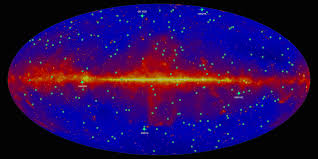 A powerful tool for characterizing and classifying gamma-ray bursts (GRBs) to allow their use as tracers of the expansion history of the universe has recently been presented by an international team of researchers led by Dr. Maria Dainotti, assistant Professor at Jagiellonian University, Poland and concurrently serve as Chretienne Fellow appointed by the American Astronomical Society at Stanford University. The work, which has been published in the Astrophysical Journal, is a statistical analysis of the properties of the yet mysterious GRBs, aimed at determining a sub-group of GRBs and investigating the physical origin of these systems.
A powerful tool for characterizing and classifying gamma-ray bursts (GRBs) to allow their use as tracers of the expansion history of the universe has recently been presented by an international team of researchers led by Dr. Maria Dainotti, assistant Professor at Jagiellonian University, Poland and concurrently serve as Chretienne Fellow appointed by the American Astronomical Society at Stanford University. The work, which has been published in the Astrophysical Journal, is a statistical analysis of the properties of the yet mysterious GRBs, aimed at determining a sub-group of GRBs and investigating the physical origin of these systems.
Compact galaxy groups observed with LOFAR radio interferometer
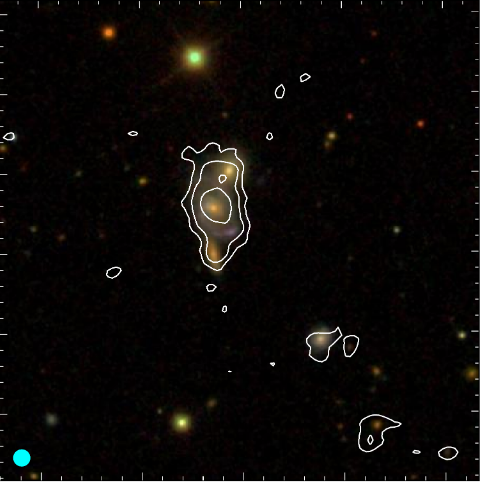 LOFAR Two-metre Sky Survey (LoTSS) has detected thousands of new galaxies. International team — including scientists from the Astronomical Observatory of the Jagiellonian University — used this survey to identify the groups of galaxies from the Hickson Compact Groups and Magnitude Limited Compact Groups samples that emit at the low radio frequency of 150 MHz. Their radio emission was then characterised and the newly obtained results were compared to earlier observations and theoretical predictions for the groups.
LOFAR Two-metre Sky Survey (LoTSS) has detected thousands of new galaxies. International team — including scientists from the Astronomical Observatory of the Jagiellonian University — used this survey to identify the groups of galaxies from the Hickson Compact Groups and Magnitude Limited Compact Groups samples that emit at the low radio frequency of 150 MHz. Their radio emission was then characterised and the newly obtained results were compared to earlier observations and theoretical predictions for the groups.
Stars, galaxies and quasars from the Infrared WISE Survey
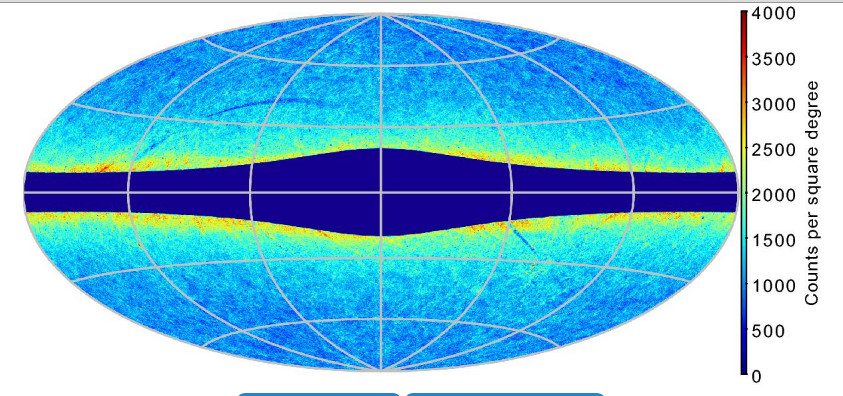 The Wide-field Infrared Survey Explorer (WISE) satellite has detected hundreds of millions of new infrared sources. Classifying them reliably is, however, a very challenging task. Simple colour cuts are often not sufficient; for satisfactory levels of completeness and purity, more sophisticated classification methods are needed. A team of astronomers from Jagiellonian University and other Polish research centers is developing new, automated methods of source classification in full-sky WISE data.
The Wide-field Infrared Survey Explorer (WISE) satellite has detected hundreds of millions of new infrared sources. Classifying them reliably is, however, a very challenging task. Simple colour cuts are often not sufficient; for satisfactory levels of completeness and purity, more sophisticated classification methods are needed. A team of astronomers from Jagiellonian University and other Polish research centers is developing new, automated methods of source classification in full-sky WISE data.
Possible link between relativistic jets and accretion disk found in the giant quasar 4C+74.26
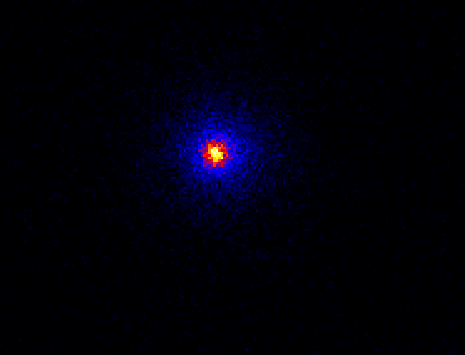 4C+74.26 is a quasar located about 1.4 billion light years away from us - one of the few quasars which has giant radio lobes spreading across millions of light years. An international team of researchers led by Dr. Gopal Bhatta from the Jagiellonian University in Kraków studied the source using multifrequency observations from the ground and space based telescopes. The optical observations were obtained mostly from Suhora and Krakow observatories, and 15 GHz radio observations were gathered from the 40-m telescope at the Owens Valley Radio Observatory (OVRO). Observations from the hard X-ray space telescopes, Swift/BAT and NuSTAR, were also included in the study.
4C+74.26 is a quasar located about 1.4 billion light years away from us - one of the few quasars which has giant radio lobes spreading across millions of light years. An international team of researchers led by Dr. Gopal Bhatta from the Jagiellonian University in Kraków studied the source using multifrequency observations from the ground and space based telescopes. The optical observations were obtained mostly from Suhora and Krakow observatories, and 15 GHz radio observations were gathered from the 40-m telescope at the Owens Valley Radio Observatory (OVRO). Observations from the hard X-ray space telescopes, Swift/BAT and NuSTAR, were also included in the study.

